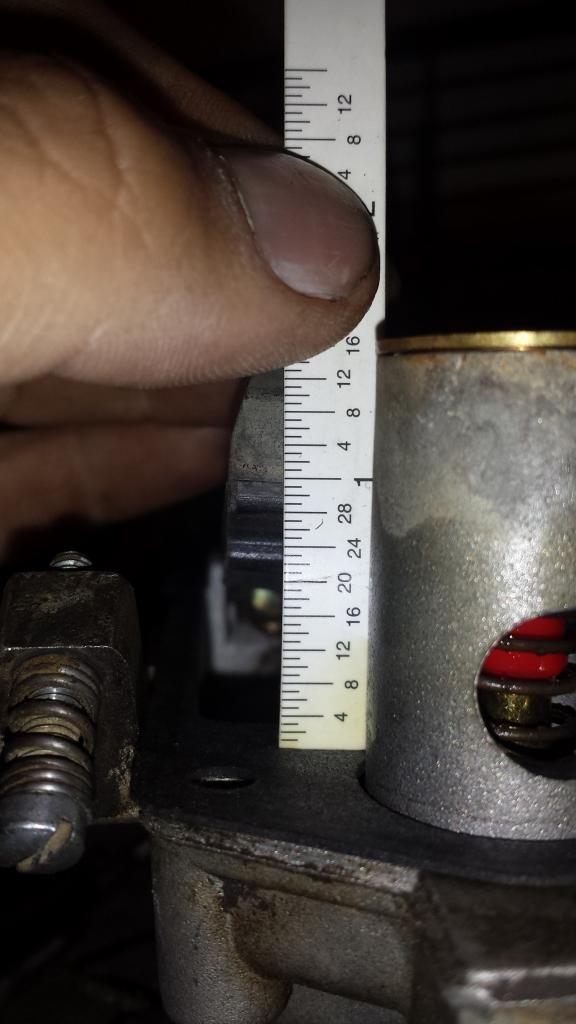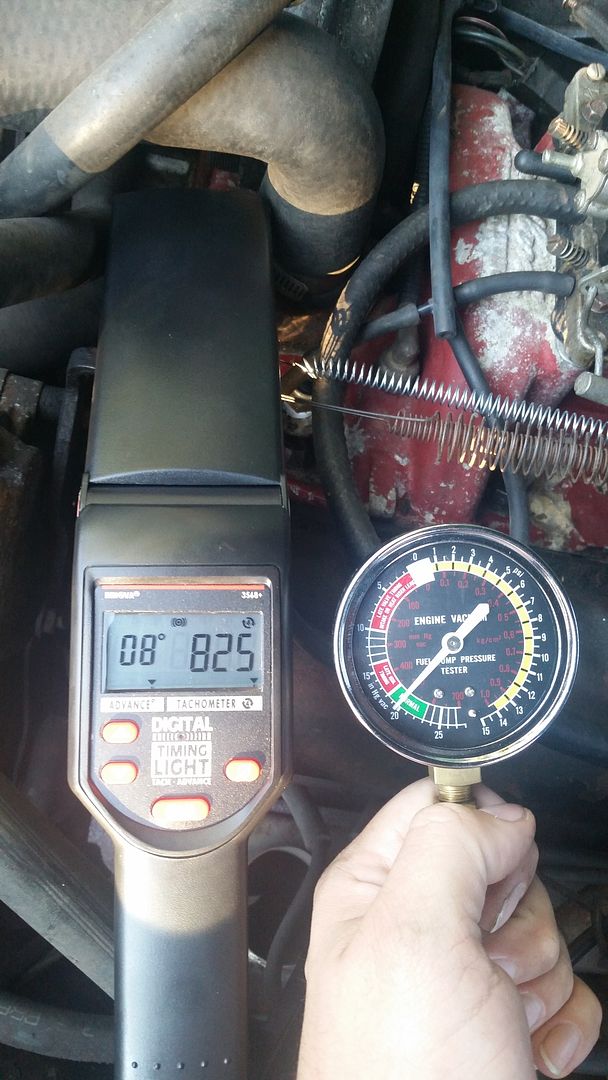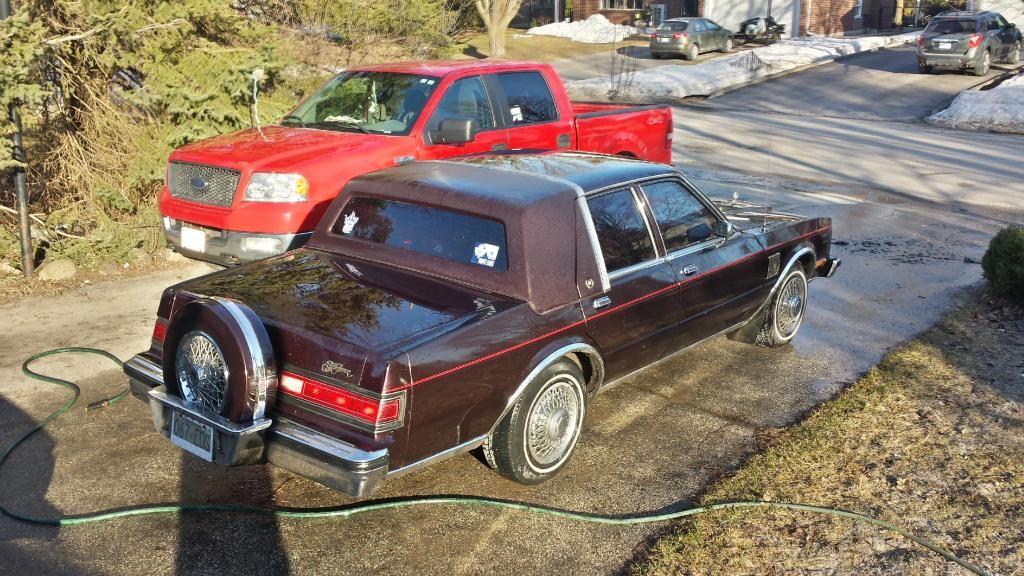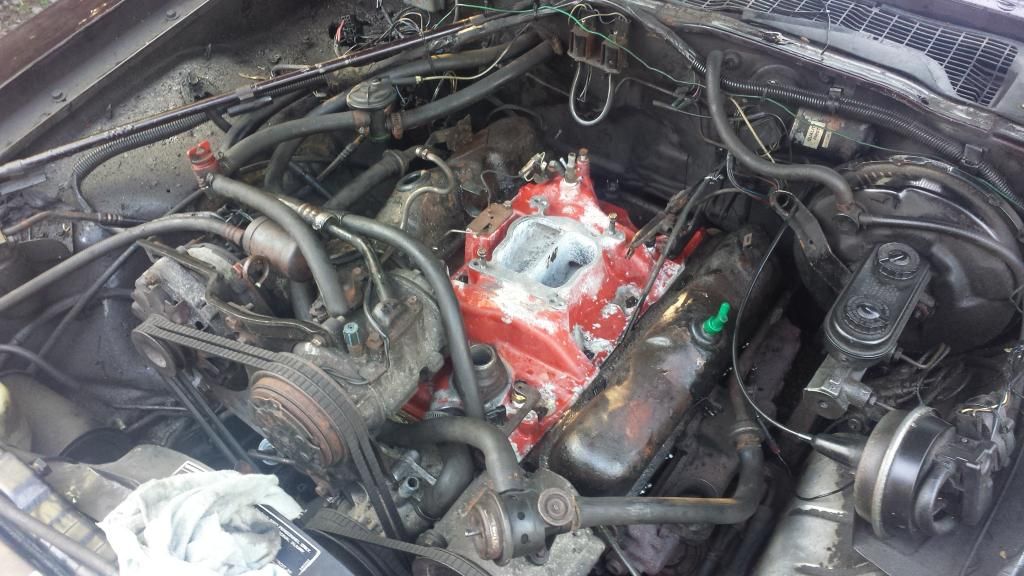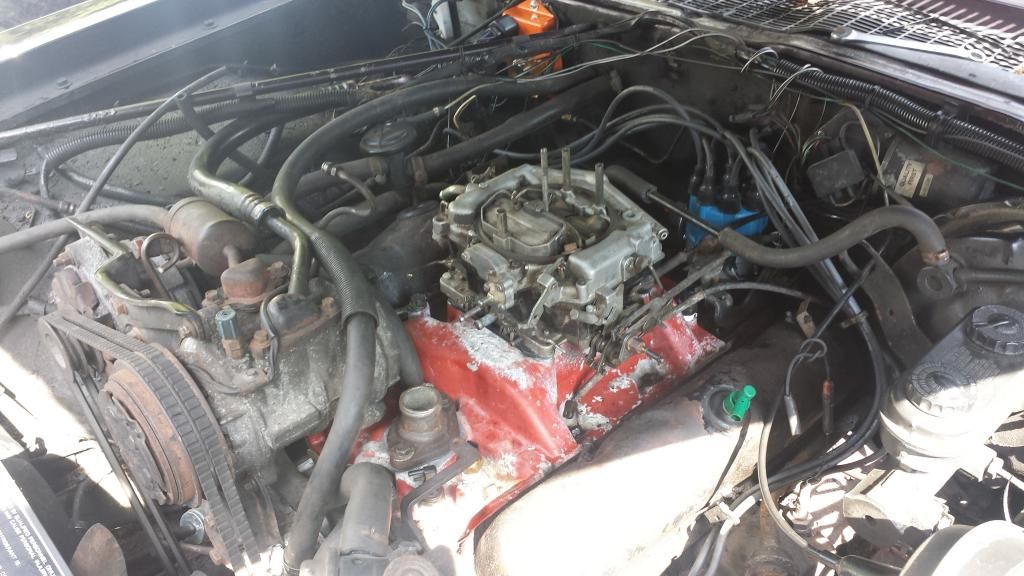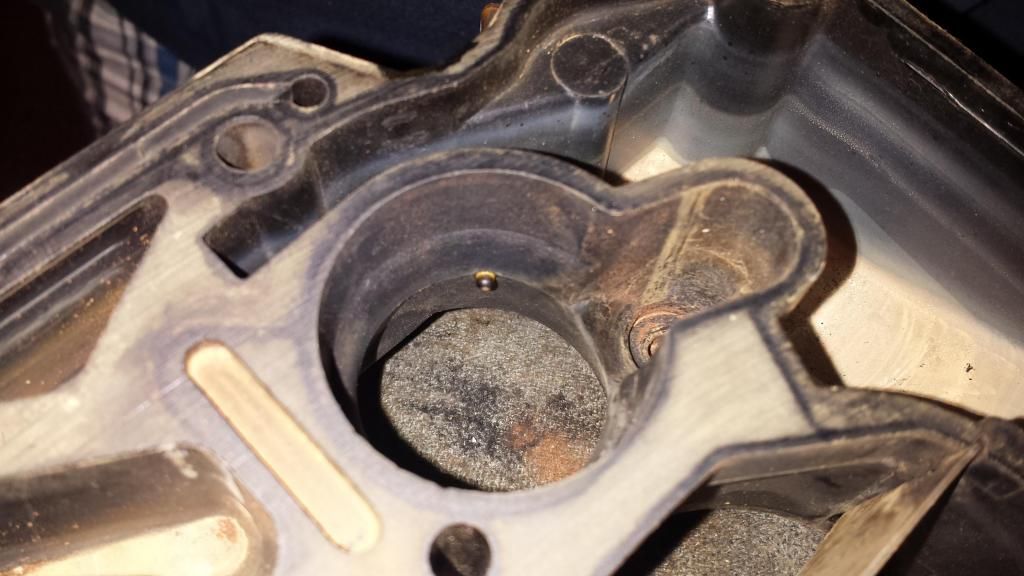8v-of-fury
Active Member
It would seem that no amount of fiddling with the idle jets and throttle screw ever get it so I get a good Start/idle/off-line acceleration. Also I might note that it does seem mostly inconsistent, sometimes it will sit and stumble at an in-gear-idle where the oil pressure light comes on and other times it doesn't. Sometimes it stumbles to get off the line, other times its got as much power as it's ever had.
This is a bone stock 1988 318, with the addition of an edelbrock 4v intake and 850cfm Thermoquad up top. I also switched to a performance mechanical ignition system to do away with the ELB/ESA system that hung off of the air cleaner.
I do not think I have a vacuum leak, as the engine at idle pulls about 22in/hg. I do fear as though my junkyard thermoquad might be junk ;) lol. It has been on the engine for about 1.5 years now and generally starts properly, unless it stalls out (from said shitty idle) then getting it restarted is 20-30 seconds of cranking....
What causes that? is this the carburetor running out of fuel? Perhaps my fuel pump is weak?wouldn't that make itself more noticeable at higher rpm's though? If you leave the trans in 1st gear, it will pull and pull till the exhaust system chokes it out and you have no power left.. So I do not think that is it either.
I am having a friend put together a spare spreadbore carb for me tonight and I will try that out, if the same symptoms prevail then I guess we need to look deeper! eh?!
This is a bone stock 1988 318, with the addition of an edelbrock 4v intake and 850cfm Thermoquad up top. I also switched to a performance mechanical ignition system to do away with the ELB/ESA system that hung off of the air cleaner.
I do not think I have a vacuum leak, as the engine at idle pulls about 22in/hg. I do fear as though my junkyard thermoquad might be junk ;) lol. It has been on the engine for about 1.5 years now and generally starts properly, unless it stalls out (from said shitty idle) then getting it restarted is 20-30 seconds of cranking....
What causes that? is this the carburetor running out of fuel? Perhaps my fuel pump is weak?wouldn't that make itself more noticeable at higher rpm's though? If you leave the trans in 1st gear, it will pull and pull till the exhaust system chokes it out and you have no power left.. So I do not think that is it either.
I am having a friend put together a spare spreadbore carb for me tonight and I will try that out, if the same symptoms prevail then I guess we need to look deeper! eh?!

